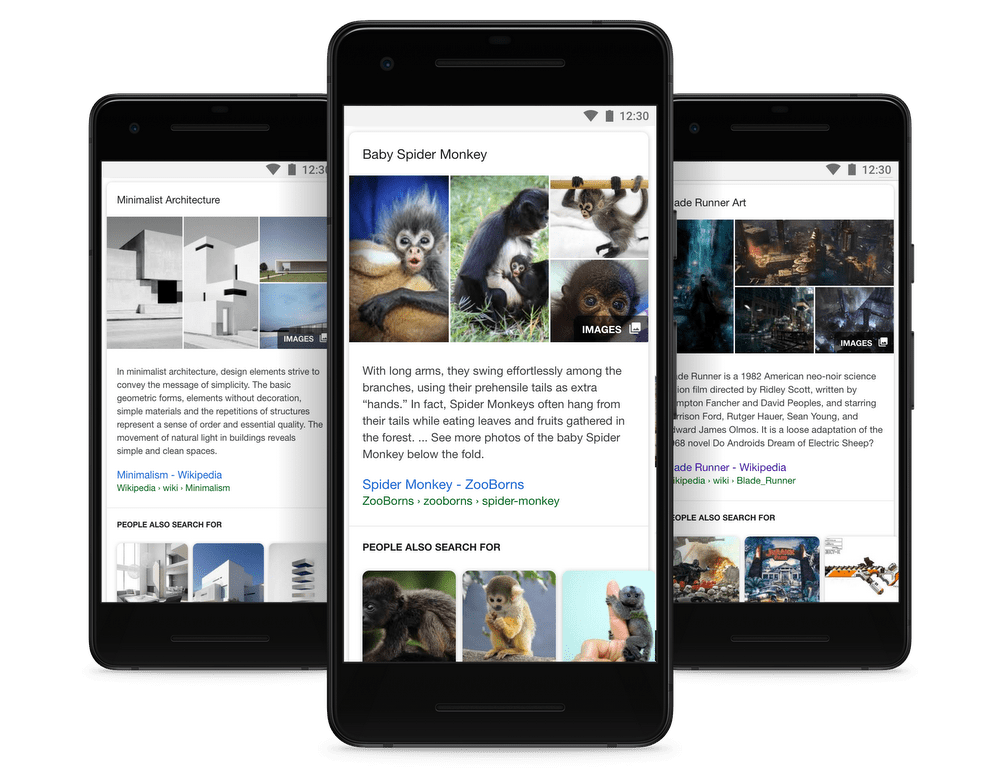Google’s announced changes will see a number of new features coming into the search results pages, as the search engine looks to increase its ability to answer user queries within the search result. But what does it mean for website owners and their traffic from organic search?
Firstly, let’s look at what’s changing.
Search snippets are getting longer, and going dynamic
DIGITAL MINUTE
Search snippets, the snippet of text that appear under the link of a search result, are getting longer.
Currently restricted to 160 characters, Google will now determine whether or not to extend the snippet to as much as 230 characters depending on the nature of the user query. The decision to increase the search result will be taken dynamically, and is designed to answer the users question as much as possible without the need for a click to the actual search result.
In cases where the user click is likely to be needed in order to deliver the full answer, it’s likely that Google will display the default 160 character snippet.
Introducing the answers carousel
OK, I see them again. Here are Answer Cards in both desktop and mobile search. The mobile version includes a carousel so you can swipe through answers. And check out the green "Best Answer" box with the number of votes. Looks like it's being tested now. h/t @cremf pic.twitter.com/F1tKQbwfnN
— Glenn Gabe (@glenngabe) December 5, 2017
OK, I see them again. Here are Answer Cards in both desktop and mobile search. The mobile version includes a carousel so you can swipe through answers. And check out the green "Best Answer" box with the number of votes. Looks like it's being tested now. h/t @cremf
11:39 AM - Dec 5, 2017
5 5 Replies 16 16 Retweets 24 24 likes
Twitter Ads info and privacy
There have been sightings of a new form of ‘answers carousel’ which appears to be something that Google is currently testing in selected markets and search results.
These are effectively a carousel within the search snippet that offers a list of answers that are picked from the content that the search snippet is linking to.
Initial discussion suggests that these carousels seems to be pulling in content from discussion forums, where there may be numerous answers or opinions on a given question. The carousel even highlights what is considered to be the “best answer”, which appears to be the answer with the most votes in the forum.
More content into featured snippets

As well as longer content in search results snippets, featured snippets are going to start packing in much more content as well.
Google has confirmed that a selection of featured snippets will now include more images and related search suggestions within the box displaying the featured snippet content.
It is also expanding the information displayed in the Knowledge Panel to include related content.
“For example, while looking at the Knowledge Panel about skiing, you’ll see related searches for sports such as snowboarding directly inside the result,” said Google product manager, Michael Galvez, in a post on The Keyword blog.
A threat to your organic search traffic?

All of this raises a big question amongst those responsible for driving traffic to brand pages; what about our traffic from organic search?
Google is quiet when it comes to those concerns, claiming simply that “search is not just about answering your questions — it’s also about discovery”. These updates, in the search engines’ eyes, are about helping searchers to further explore the topics they are researching.
It’s unlikely that we will see many of these changes apply to product and commercial searches in the immediate future, but with more and more brands producing greater quantities of “advice” content, it is something that many brands may need to factor in to their strategies for 2018.
And because these new Google features take so much screen real estate, it actually makes it more important for brands to be delivering that content through an answer box or Knowledge Panel snippet, and to ensure that they have content that is optimised for these new features.
Google might be reducing the traffic that it ultimately sends to brands, but more of what traffic it does send is likely to go to those brands that are in those prominent Knowledge Panel positions.


